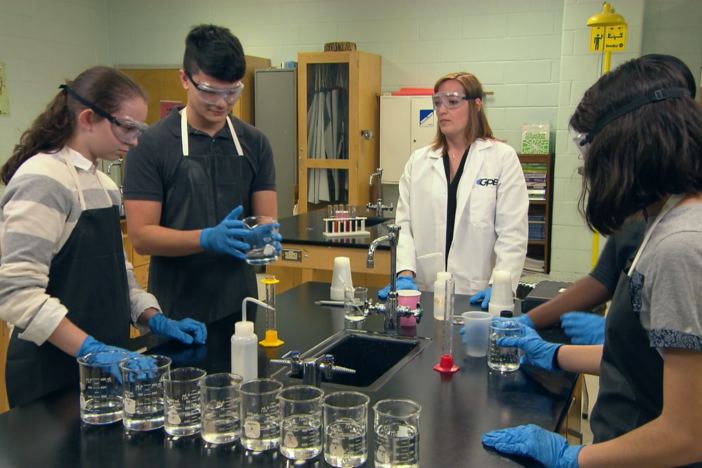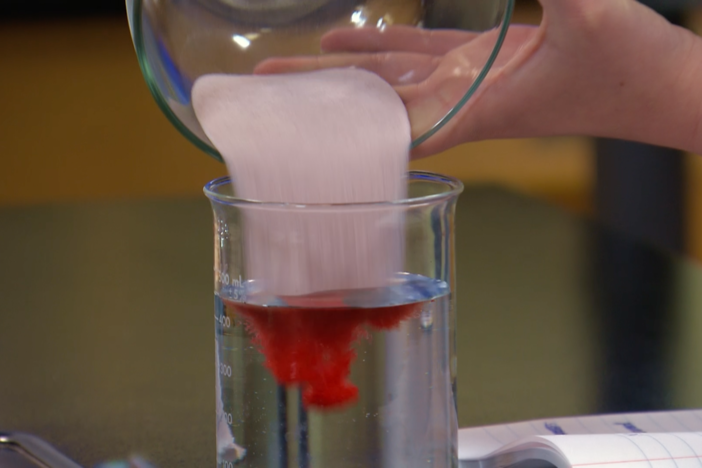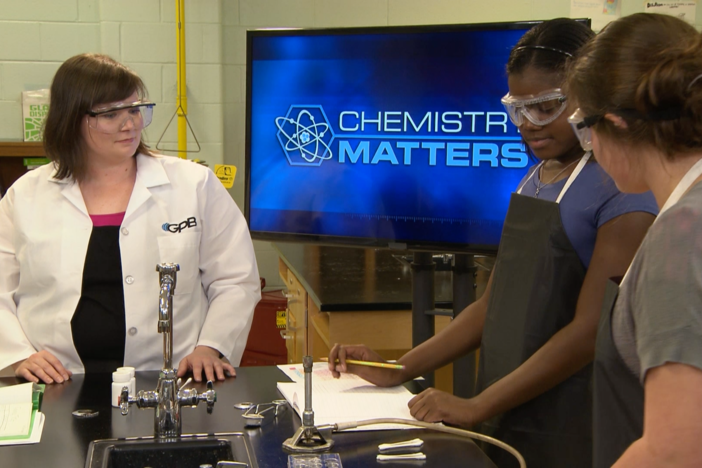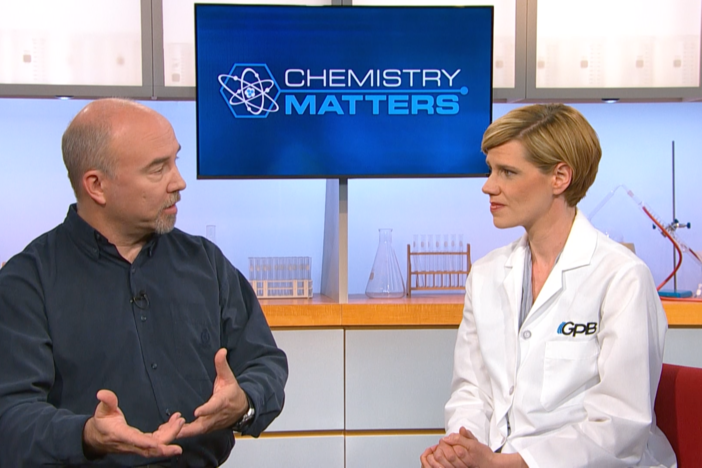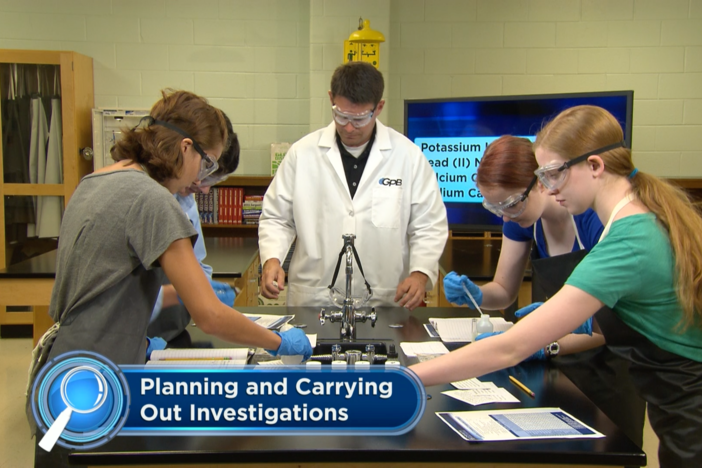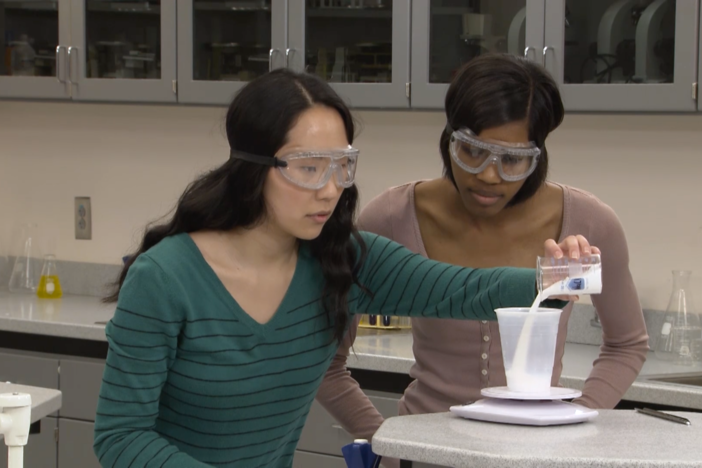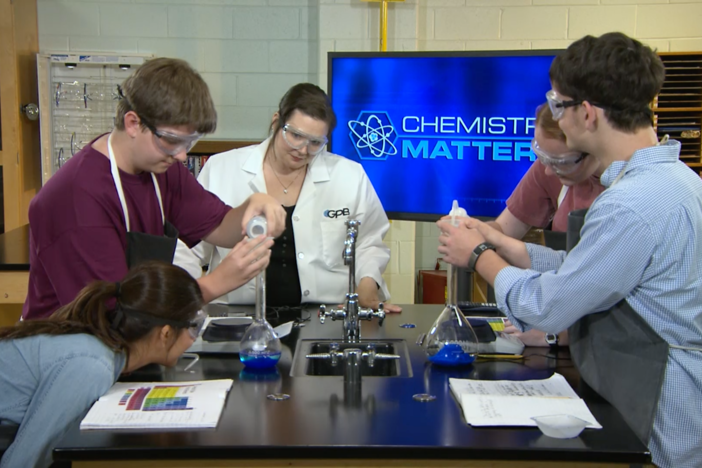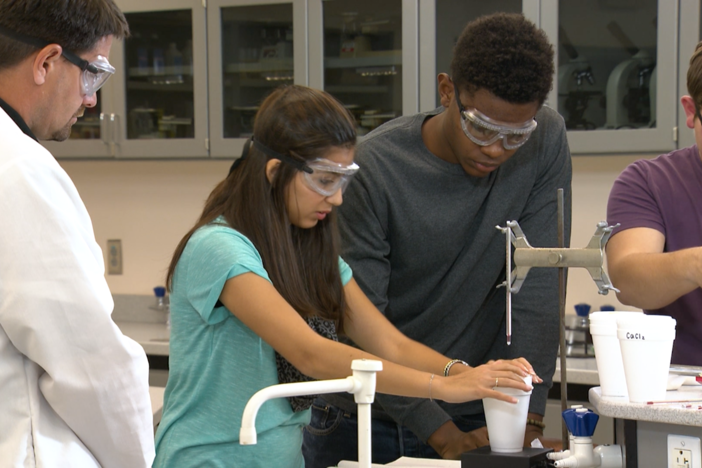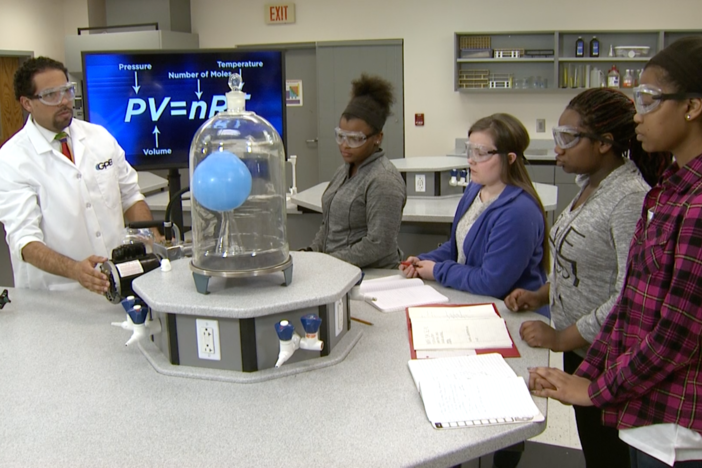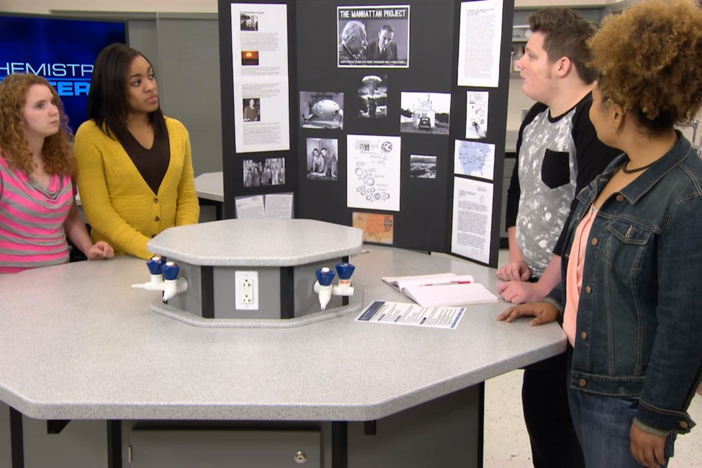Segment B: Introduction to Matter Review
We recap Unit 2," Introduction to Matter," in which we covered crosscutting concepts that are used by scientists around the world and looked at the chemical and physical properties of matter. We watched a scientist demonstrate phase changes from solid to liquid to gas in our studio, using liquid nitrogen.
Segment B: Introduction to Matter Review
We recap Unit 2," Introduction to Matter," in which we covered crosscutting concepts that are used by scientists around the world and looked at the chemical and physical properties of matter. We watched a scientist demonstrate phase changes from solid to liquid to gas in our studio, using liquid nitrogen.
Science
Obtain, evaluate, and communicate information about the chemical and physical properties of matter resulting from the ability of atoms to form bonds.
Plan and carry out an investigation to gather evidence to compare the physical and chemical properties at the macroscopic scale to infer the strength of intermolecular and intramolecular forces.
Construct an argument by applying principles of inter- and intra-molecular forces to identify substances based on chemical and physical properties.
Obtain, evaluate, and communicate information to compare and contrast the phases of matter as they relate to atomic and molecular motion.
Ask questions to compare and contrast models depicting the particle arrangement and motion in solids, liquids, gases, and plasmas.
Obtain, evaluate, and communicate information to explain the properties of solutions.
Develop and use models to explain the properties (solute/solvent, conductivity, and concentration) of solutions.
Plan and carry out investigations to determine how temperature, surface area, and agitation affect the rate solutes dissolve in a specific solvent.
Analyze and interpret data from a solubility curve to determine the effect of temperature on solubility.
Obtain, evaluate, and communicate information to explain transformations and flow of energy within a system.
Analyze and interpret data to explain the flow of energy during phase changes using heating/cooling curves.
Obtain, evaluate, and communicate information about the structure and properties of matter.
Develop and use a model to compare and contrast pure substances (elements and compounds) and mixtures.
Develop and use models to describe the movement of particles in solids, liquids, gases, and plasma states when thermal energy is added or removed.
Plan and carry out investigations to compare and contrast chemical (i.e., reactivity, combustibility) and physical (i.e., density, melting point, boiling point) properties of matter.
Construct an argument based on observational evidence to support the claim that when a change in a substance occurs, it can be classified as either chemical or physical.
The Chemistry Matters teacher toolkit provides instructions and answer keys for labs, experiments, and assignments for all 12 units of study. GPB offers the teacher toolkit at no cost to Georgia educators. Complete and submit this form to request the teacher toolkit. You only need to submit this form one time to get materials for all 12 units of study.
